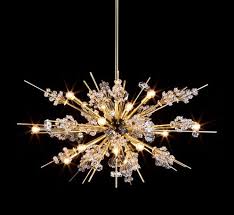lobmeyr chandelier for sale

The venerable Austrian firm J. & L. Lobmeyr is one of the world’s premier glassware makers and purveyors, noted especially for its lighting and tableware designs. Headquartered in Vienna, Lobmeyr has won numerous illustrious commissions in its nearly two centuries in business, including the chandeliers for the Hapsburg monarchy’s Schönbrunn Palace, the Lincoln Center home of the Metropolitan Opera in New York, and the Kennedy Center in Washington, D.C. Lobmeyr is still family owned and managed. The company was founded by glass trader Josef Lobmeyr in 1823. It thrived during the long tenure of his son Ludwig, who built a network of manufacturers and artisanal workshops in Bohemia—central Europe’s revered glass-making region, now part of the Czech Republic—and earned imperial patronage. (He also collaborated with Thomas Edison to create the first electric chandelier, in 1883.) His nephew, Stefan Rath, who took over as head of Lobmeyr in 1917, introduced modernist design to the company repertoire, contracting with designers such as Josef Hoffmann, Adolf Loos, Otto Prutscher and Michael Powolny to create tableware.

Lobmeyr has never been married to a dominant in-house design type. The firm has produced chandeliers and sconces in styles as various as neo-Baroque, Rococo, neoclassical (or Louis XVI), Art Nouveau, minimalist and “sputnik” mid-century modern. As you will see from the offerings available on these pages, Lobmeyr can bring a sense of grandeur suitable to any décor.With its tradition of almost 200 years of glassmaking, Lobmeyr offers crystal stemware, accessories and lighting of uncommon elegance and refinement. The Lobmeyr family history claims six generations of Austrian glassmakers, craftsmen renowned for the thick hand-cut crystal of brilliant chandeliers as well as the wafer-thin yet highly-resilient muslin glass of flawless drinking sets. Every detail, from innovative design to expert glassmaking to precision engraving, is addressed with uncompromising dedication and vast experience. Steeped in centuries of tradition yet still an icon of contemporary design, the subtlety, sophistication and pedigree of Lobmeyr crystal glassware is unmatched.

Lobmeyr’s lead-free crystal combines durability with everlasting beauty, and many Lobmeyr glasses and accessories can be customized to your personal style.As you will see from the offerings available on these pages, Lobmeyr can bring a sense of grandeur suitable to any décor.No. 54-8Design: Historical, circa 1800Height:89 cmDiameter:72 cmStyle:RenaissanceDownload Price ListThe crude and archaic iron is very versatile material.
chandeliers calgary kijijiAn experienced black smith can create raw and primal objects but also light and tender ornamentations with different techniques.
chandeliers euroluxRural styles made great use of this options as well as religious designs.
chandelier e14042No. 266-6Design: Zahn, circa 1840Height:57 cmDiameter:48 cmStyle:GothicDownload Price ListThe acquisition of the archives of an important Dutch chandelier maker in the 1920s enables us to still manufacture originals of this style in nowhere else to be found perfection and authenticity.

Our craftsmen create with these objects the most beautiful variants of antique finishes. In modern applications the original polished finish is most sought after.No. 285-8Design: Zahn, circa 1780Height:68 cmDiameter:48 cmStyle:GothicDownload Price ListThe acquisition of the archives of an important Dutch chandelier maker in the 1920s enables us to still manufacture originals of this style in nowhere else to be found perfection and authenticity. No. 1061-8Design: Ludwig Lobmeyr, 1870Height:100 cmDiameter:57 cmStyle:HistorismDownload Price ListThe late 19th century Lobmeyr was the jewel in Austrias industry. We created stunning presentation of the Austrian hand crafting art, mirroring the creative impetus of Austria to that time. The few originals from this time are lovingly and carefully restored by our experienced craftsmen.No. 1100-4Design: Historical, circa 1350Height:28 cmDiameter:52 cmStyle:RomanesqueDownload Price ListThe crude and archaic iron is very versatile material. J. & L. Lobmeyr

About J. & L. Lobmeyr Family – Company – Cultural History. Lobmeyr is in its sixth generation as a family business today. A love of the material, the emotional relationship with the product and the commitment of personal energy defined our method of working from the beginning. In this context each generation leaves its trace. In 1823 Josef Lobmeyr senior founds the company in Vienna’s Weihburggasse and soon becomes Purveyor to the Imperial Court. Josef and Ludwig Lobmeyr (1855– 1917): Ludwig becomes the pioneer of Austrian/Bohemian crystal production and presents the company at the first World Fairs; in 1864 he is the co-founder of the Austrian Museum of Applied Arts in Vienna. Ludwig’s nephew Stefan Rath senior (1902–1960) leads Lobmeyr into the Modern Movement and is a co-founder of the Österreichischer Werkbund in 1912. Enduring classics are created in cooperation with Josef Hoffmann and the other artists of the Wiener Werkstätte. Hans Harald Rath (1938–1968) rebuilds Austrian crystal manufacture after the war and revolutionises the chandelier.

An example of his work still hangs in the auditorium of the Vienna State Opera today. Harald, Peter and Stefan Rath (1968–2008) expand the company, enter the Arabic and Japanese markets and open a store in Salzburg. In 1972 the chandelier manufacturer Zahn (founded 1780) is acquired. Andreas, Leonid and Johannes Rath (from 2000) grow the international sales activities and focus on co-operations with a new generation of designers. J. & L. Lobmeyr Online Shop J. & L. Lobmeyr shop location Opening HoursMonday to Friday 10am -7pm, Saturday 10am - 6pm J. & L. Lobmeyr shop contactJune 3 Art Minute: Probably J. & L. Lobmeyr, “Morning Glory Chandelier” Made in the mid–1800s, this morning glory chandelier recalls floral chandeliers made with porcelain or painted tin blossoms that were fashionable in French-style chateaux in the 1700s. Since the morning glory flower blooms and dies within a single day, it came to symbolize love, affection, or mortality in the Victorian era.